
7 minute read
Destinations: Solo
Solo Immersion
Text & Images by JUHAN KAMARUDDIN
The city of Solo, formally addressed as Surakarta, is an off-shoot of the Mataram Sultanate and was founded almost three hundred years ago. It is small in scale but big in culture and heritage, ideal for a relaxing getaway; as a matter of fact, Solo gets busy during weekends because it receives trippers from the surrounding regions and nearby cities. It also comes alive with various forms of traditional performing arts like keroncong (folk music performed by an ensemble comprising ukulele, cello, guitar, bass, violin and flute), wayang (traditional Javanese play composed of dancing, vocals and characters from Mahabharata and Ramayana epics) and ketoprak (stage performance involving drama, music and literature based on history or legend).
Batik city
Surakarta is popular among shoppers seeking products and crafts that are rich in heritage and ingenuity, especially batik, which is rich in philosophy, meaning and identity; beautiful and timeless batik motifs are believed to bring out the wearer’s charisma, while attracting positive energy at the same time.
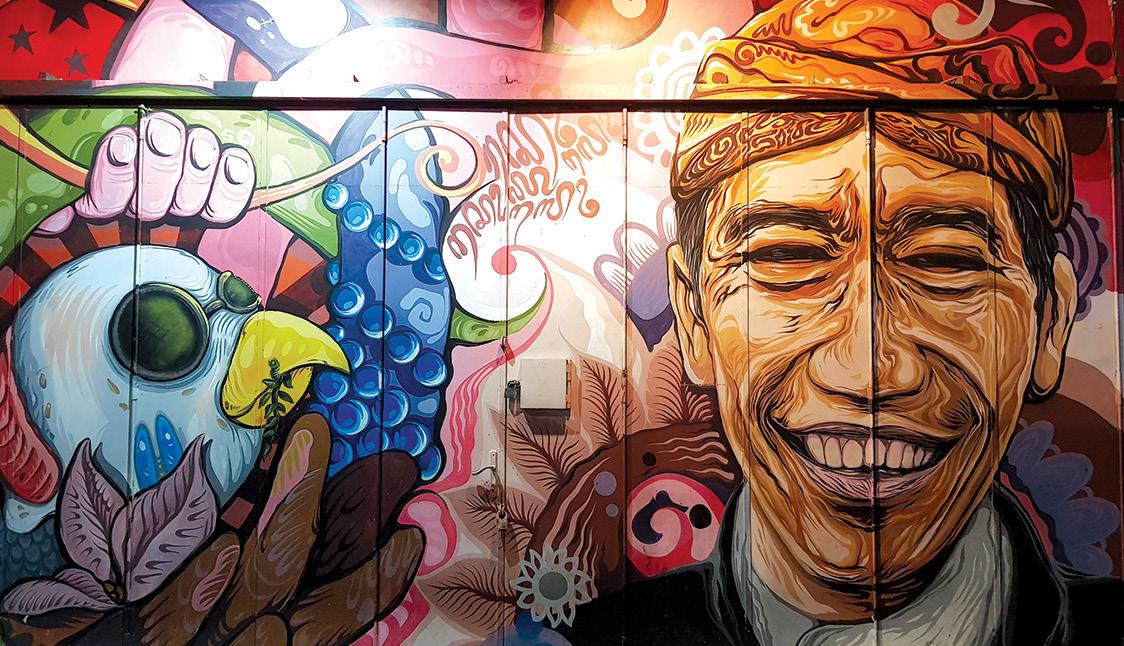
A mural depicting the President of Indonesia Bapak Joko Widodo, who previously served as Mayor of Solo.
There are two villages in Solo that are internationally renowned for batik: Kauman and Laweyan. Regarding the latter, the village is known to have existed since 1546 A.D. and spans 24 hectares squared, inhabited by batik merchants and traders for generations, who open batik atelier and showroom right at their own homes. Due to the community’s affluence, houses in Laweyan are generally palatial – characterised by two main pillars at the entrance, denoting European influence – since they need to simultaneously accommodate residential quarters and batik workshop.
One of the best places to witness a Laweyan house is Ndalem Gondosuli (www.ndalemgondosuli.com), an elegantly conserved two-storey Art Deco building with embellishments signifying batik motifs. The building even comes with an ancient bunker, a typical feature for defence and security back in the period when it was built in 1921. The house now contains meeting rooms, art space, batik workshop, showroom, digital media museum, lounge, and praying room, suitable for travellers coming in groups. Ndalem Gondosuli intends to conserve the skills, workmanship and devotion towards the production of authentic Laweyan batik since this craft embodies high aesthetic value, besides being an essential part of Javanese heritage.
Travellers’ brush with batik in Solo does not stop at Kauman or Laweyan villages; they should also head to the largest batik museum in South East Asia, Danar Hadi Batik Museum, where travellers are taken back in time to see how batik evolved over the ages through its collection of over 1,000 resplendent batik pieces procured from Indonesia and around the world, all belonging to the successful batik business owner, Santosa Doellah and wife Danarsih Hadipriyono. The museum – located inside the House of Danar Hadi (http://houseofdanarhadi. co.id/index.php) – assesses old batiks too by determining the era they belong to and how much they are currently worth.
Solo Batik Carnival 2019
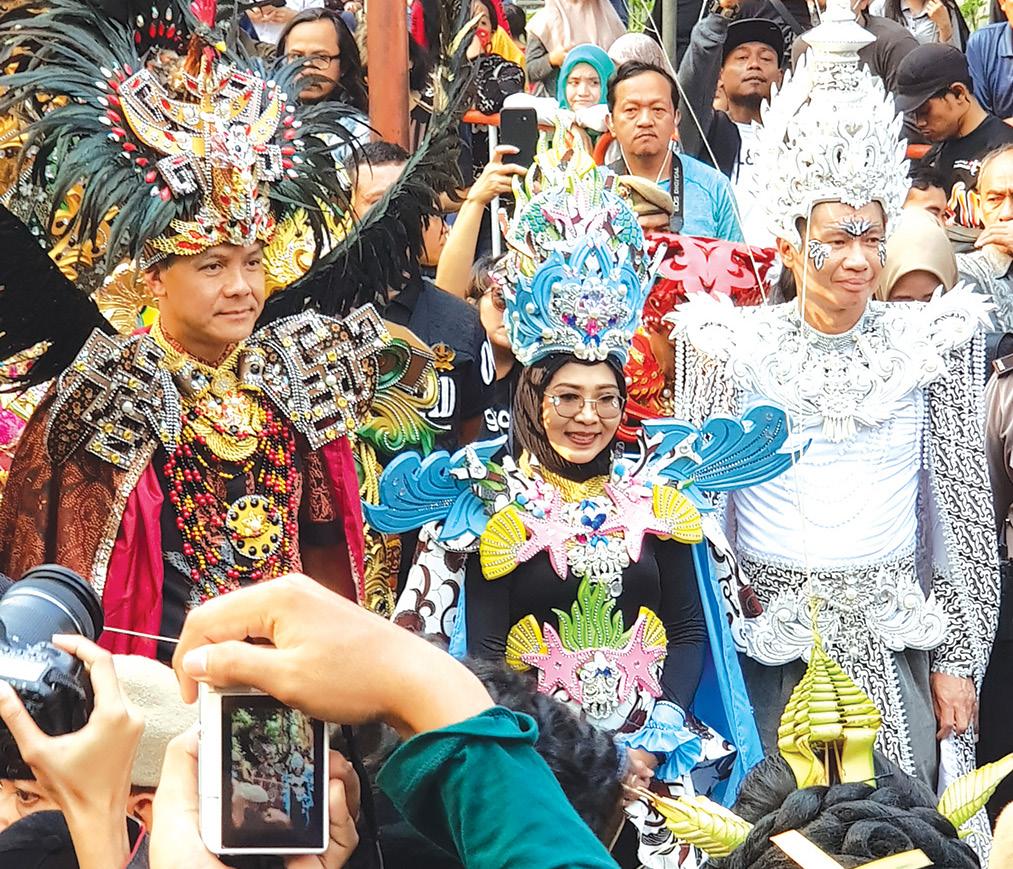
Guest of Honour Bapak Ganjar Pronowo (left) together with VIPs donning carnival costumes during SBC 2019.
On 27 July 2019, Surakarta City Government organised the 12 th Solo Batik Carnival (SBC) to further solidify the city’s standing as one of Indonesia’s leading batik cities. With the theme ‘Suvarnabhumi the Golden of ASEAN’, the launch of SBC 2019 held next to Sriwedari Stadium was attended by the Governor of Central Java Bapak Ganjar Pranowo, who supportively donned amazing batik-inspired carnival costume.
Besides Indonesia, SBC 2019 saw the involvement of other countries in ASEAN such as Philippines, Malaysia, Thailand, Singapore, Myanmar, Brunei Darussalam, Laos, Cambodia, Vietnam and Timor Leste.
The launch of SBC culminated with a grand parade of SBC participants from local communities showcasing remarkable batik carnival costumes while walking for five kilometres along Surakarta’s main thoroughfare, Slamet Riyadi Road, beginning from Sriwedari Stadium all the way to the Town Hall.
Stepping back in time
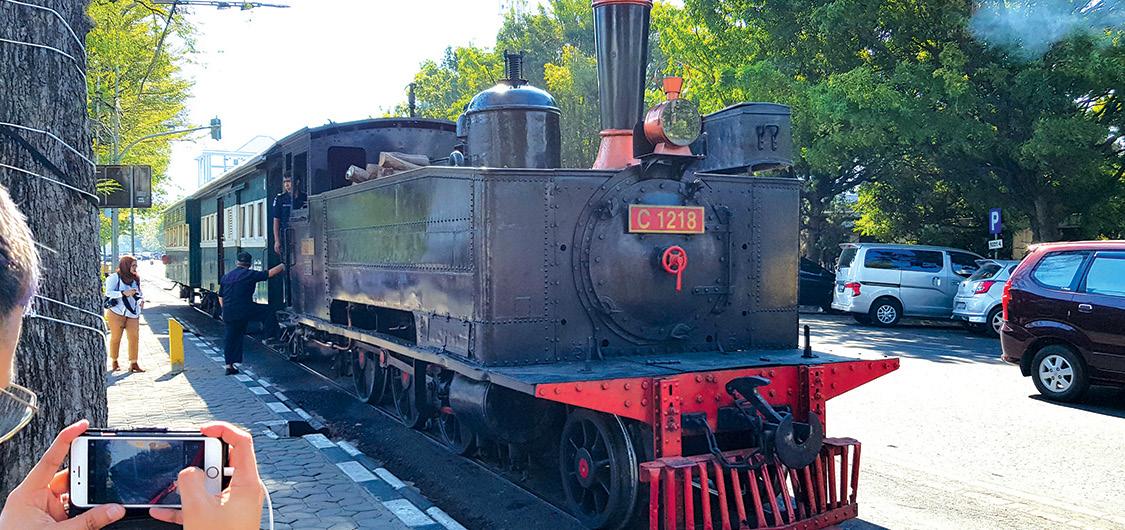
Jaladara heritage train, which consists of German steam locomotive made in 1896 and 1920s Dutch carriages.
It seems like travellers would never be able to escape from history and heritage when they are in Solo. One such attraction is Kraton Kasunanan Surakarta (Surakarta Hadiningrat Palace), built in 1745 by Paku Buwana II when he moved the capital from Kartasura to establish the Surakarta Sunanate at Sala village (old name for Solo). The word sunan refers to the title given to the rulers of Surakarta. Travellers would surely appreciate the collection of artefacts and relics belonging to the royal family such as the golden horse-drawn carriage, palanquins for royal brides, weaponry, sculptures and artworks. The palace is where travellers learn about the city’s royal past and lineage.
To literally be transported back in time, travellers should also take the nostalgic Jaladara heritage train ride on Dutch 1920s carriages powered by a German steam locomotive made in 1896 from Purwosari station to Solokota and back, cutting right through the middle of Solo at the speed of 20 kilometres an hour. Once the train reaches Solokota station, the locomotive is decoupled from the carriages, filled with water to make enough steam to return to Purwosari, then shunted to change its direction and maintain its position at the head of the train, and finally recoupled back to the carriages. The entire ride consumes five cubic metres of teakwood, used as fuel to feed the furnace to heat up the water in the boiler to produce steam. Maintained and managed by Surakarta City Government, the train runs only up to six times per month based on group requests. This ride comes highly recommended for all travellers, especially MICE groups, because it offers a glimpse of how it was like to travel by rail in early 20th century. To experience this, contact the Surakarta City Government Communications Department at +62 85 4200 5156. The rate starts at IDR3.5 million for a group of 30 persons.
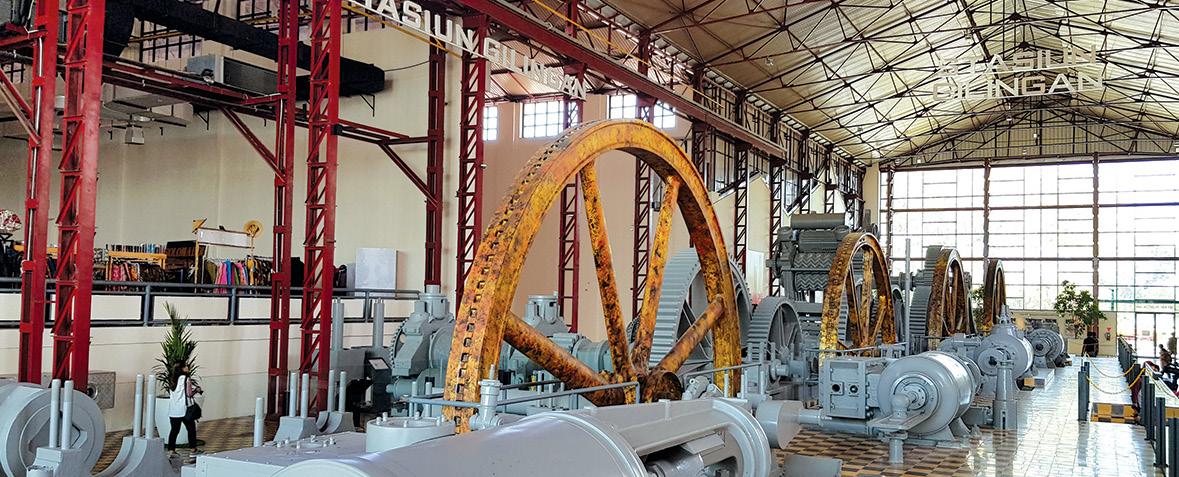
The huge sugarcane-crushing machine that still can be seen at De Tjolomadoe.
Another historic venue is De Tjolomadoe (https://www. detjolomadoe.com/), formerly a sugarcane mill founded by Mangkunegara IV in 1861, now turned into a well curated museum and educational space highlighting the history of sugar production (sugarcane was first cultivated in Papua New Guinea as early as 8,000 B.C.), sugar cultivation process, and the contribution of the sugar industry to the Indonesian economy. Located in Karanganyar (Solo’s most fertile area where sugarcane was once abundant and sent to the mill for processing), De Tjolomadoe is 20 minutes’ drive from Solo city centre. The mill stopped operating in 1997, but parts of the mill’s huge machines can still be seen. De Tjolomadoe provides a state-of-art event space coupled with a concert hall, making it a fitting venue for large-scale meetings, incentives, conventions and exhibitions (MICE) purposes.
Culinary wonders
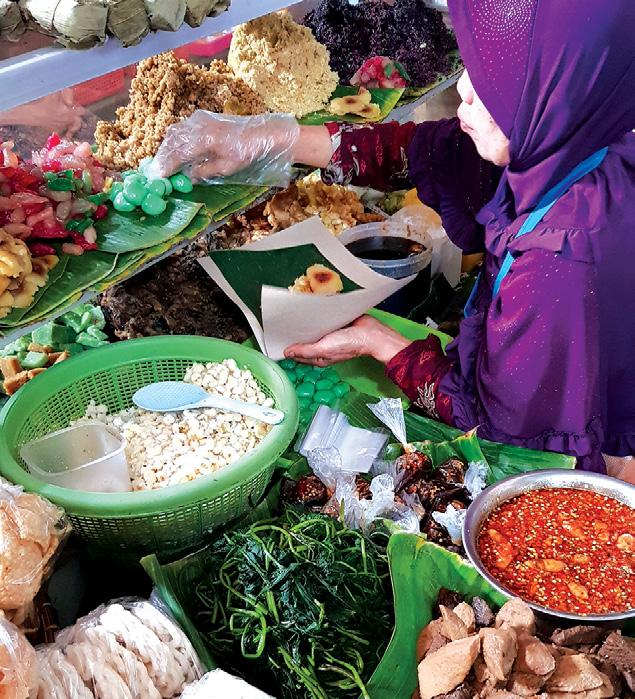
A typical stall in Pasar Gede that sells lenjongan besides other local snacks.
Another element that draws travellers to Solo is the array of local culinary offerings and street food.
Wondering what food and beverages to try in Solo? Have a go at the following:
» Traditional Javanese concoctions or tonics filled with medicinal properties called jamu, made from selected natural ingredients like turmeric, ginger, galangal, cinnamon, palm sugar, kaffir lime and lemongrass, prepared in different mixtures and flavours for different purposes such as beras kencur to increase appetite and remove body aches and gula asam to reduce weight and improve digestion.
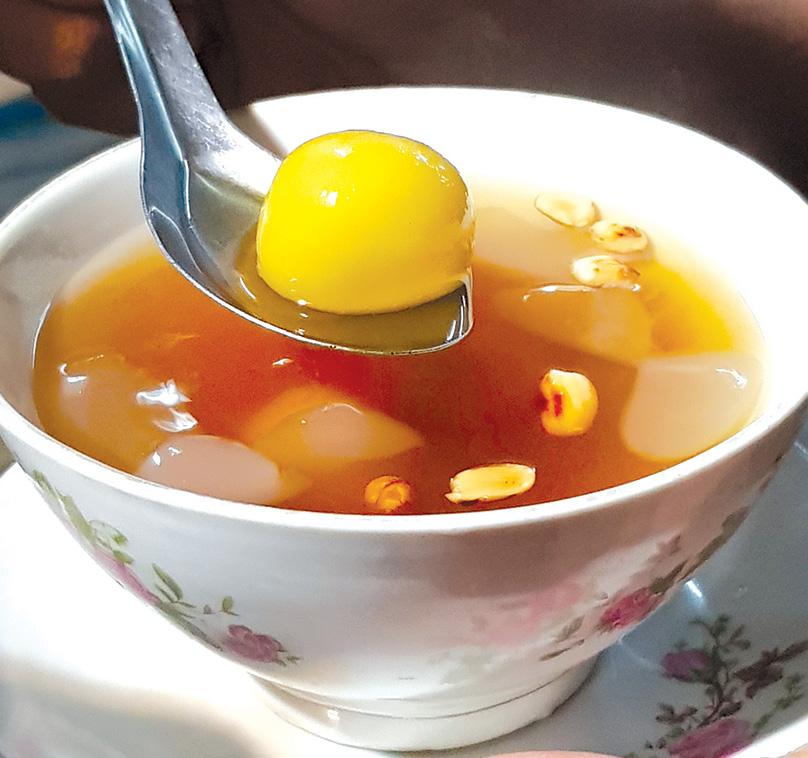
Ronde, a refreshing dessert popular in Solo.
» Refreshing local dessert called ronde (glutinous rice balls with crushed peanuts in warm ginger soup).
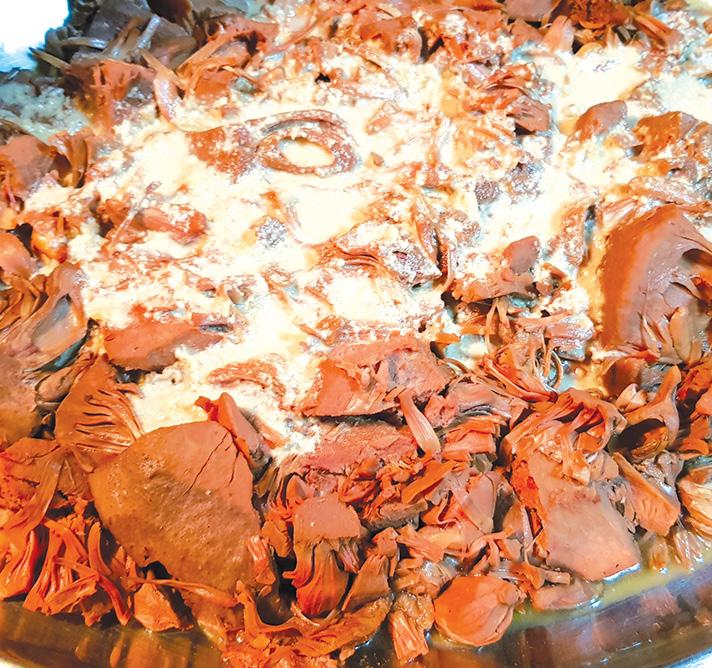
Gudeg Solo served at Adem Ayem Restaurant.
» Gudeg Solo (sweet stew made from young unripe jackfruit mixed with palm sugar, coconut milk, herbs and spices) eaten with rice alongside krecek (cattle skin spicy stew dish) and telur pindang (eggs boiled in spices, salt and soy sauce). One place to order this dish is at Adem Ayem Restaurant on Jalan Slamet Riyadi.
» European-influenced dish originated from Solo called Selat Segar Solo, consisting of braised beef tenderloin served in sweet watery sauce accompanied by vegetables.
» Tengkleng (aromatic mutton bones and ribs simmered with herbs and spices) and mutton satay at Pak Haji Bejo Restaurant, one of the President of Indonesia Bapak Joko Widodo’s favourite places when he was the Mayor of Solo.
» Dawet telasih (sweet cold dessert containing droplets of green rice flour jelly, coconut milk and palm sugar syrup with the addition of basil) served at a stall belonging to Bu Dermi – another of Bapak Presiden Joko Widodo’s favourites – at Pasar Gede (Big Market).
» Lenjongan, a sweet chewy local snack drizzled with palm sugar, also can be found at Pasar Gede. » Serabi (a sweet and soft delicacy made of flour and sugar topped with different kinds of toppings) at Serabi Notosuman, one of the best and the oldest establishments in Solo.
Browse http://solocity.travel/ and https://www.gayatravel.com.my/goingsolo-surakarta/ for more eye-opening information regarding Solo.
Gaya Travel Magazine expresses our heartfelt gratitude to the Surakarta City Government for making the writer’s trip to Surakarta a reality.










